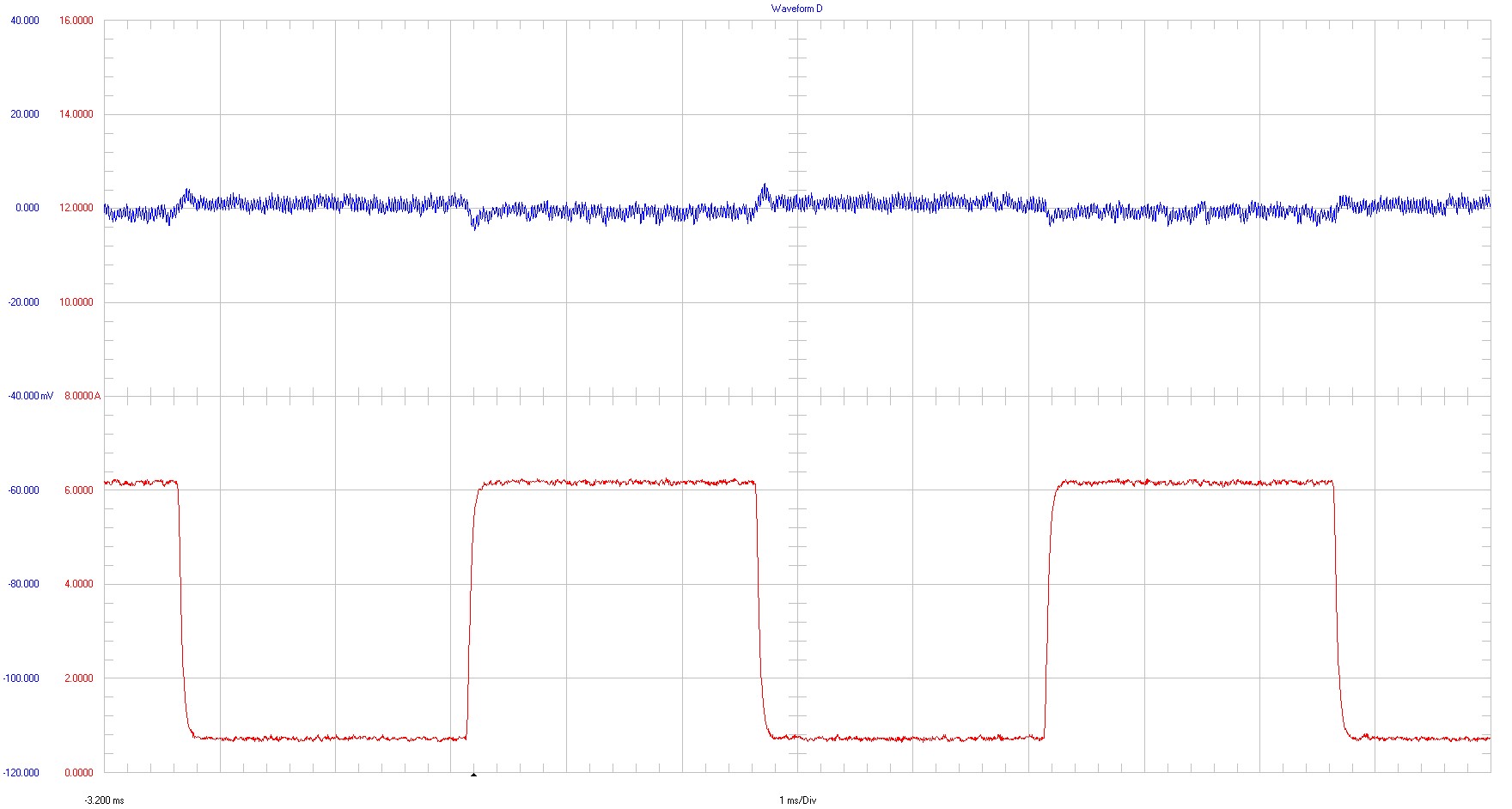TIDT289 July 2022
3.4.1.2 Cross Talking on VOUT2 (3.3 V)

|
Ch1 VOUT2 (3.3 V at 1 A) 20 mV / div Ch2 IOUT1 2 A / div 1 ms / div 20-MHz bandwidth |
Figure 3-9 Load Transient
VOUT1 ⇒ Cross Talking VOUT2
TIDT289 July 2022

|
Ch1 VOUT2 (3.3 V at 1 A) 20 mV / div Ch2 IOUT1 2 A / div 1 ms / div 20-MHz bandwidth |